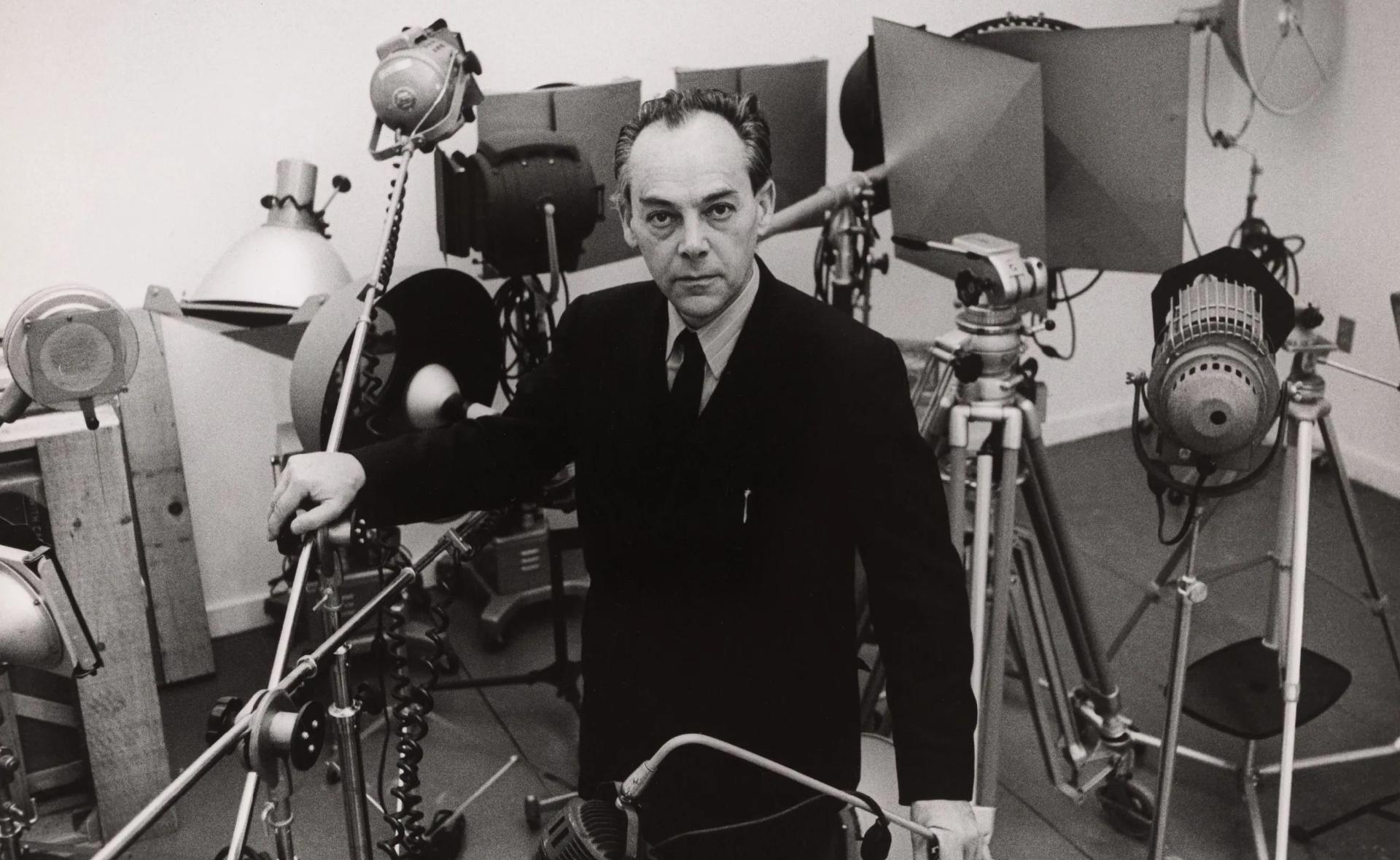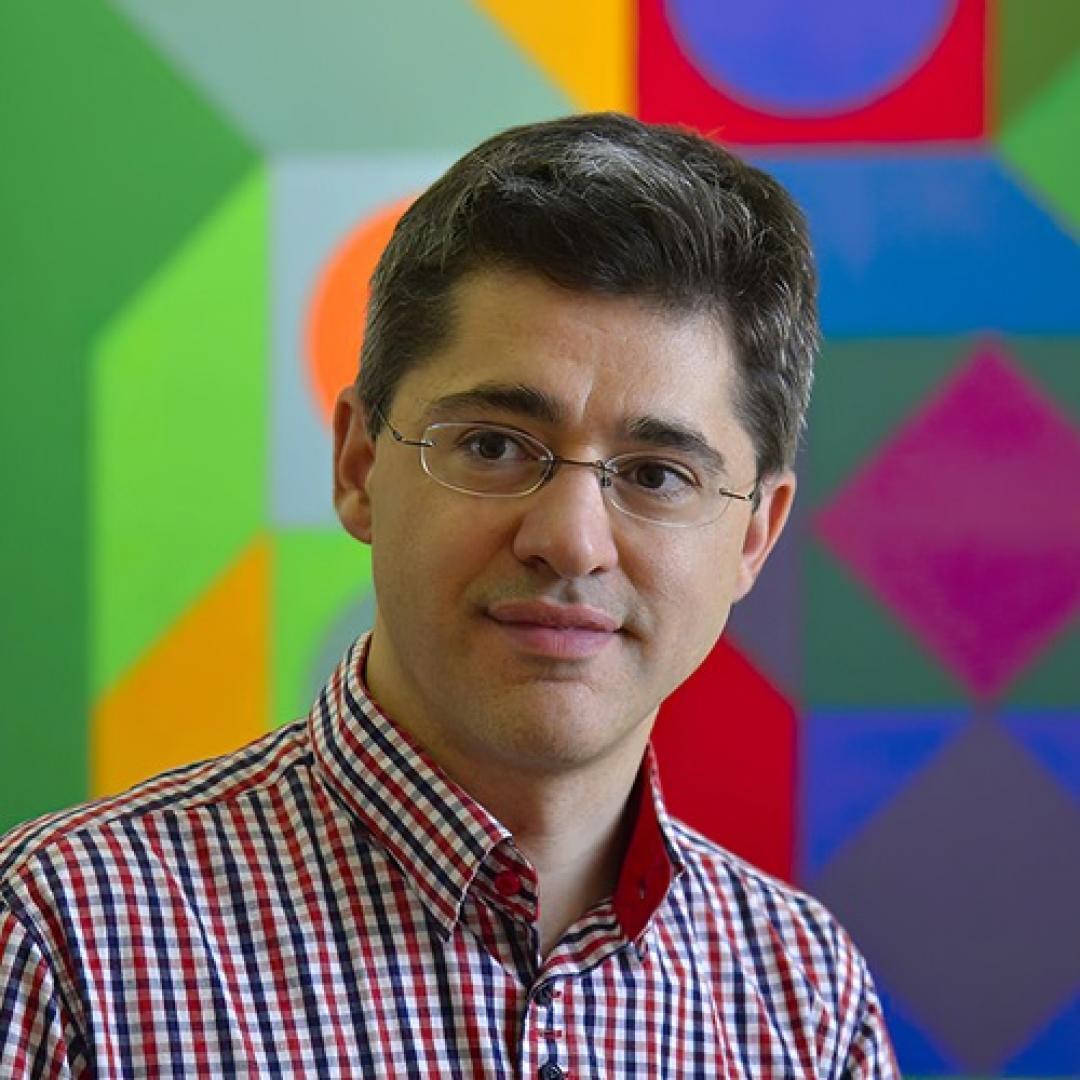32 Second Avenue New York, NY 10003
The Anthology Film Archives presents a unique program series focusing on Hungarian-born painter, photographer and designer György Kepes. The events take place on October 12-13, 2024 at the Anthology Film Archives in New York.
The Hungarian artist György Kepes (1906-2001) is well-known for his explorations of the interconnectedness of art and science, nature and technology. As a photographer, painter, filmmaker, graphic designer and environmental artist, he embraced mid-20th modernity and the technological society while recognizing the fundamental expressiveness of forms found in the natural world. Kepes was a member of the European Bauhaus before coming to Chicago, upon the invitation of Laszlo Moholy-Nagy, to teach at the New Bauhaus. He is the author of seminal books and articles, which have been influential to generations of artists, architects and designers. He was also the founding director of the Center for Advanced Visual Studies at the Massachusetts Institute of Technology. A new museum, the Kepes Visual Centre, is open at the University of Eger, outside of Budapest, which will house the existing Kepes Museum founded in 1990.
PROGRAM DETAILS
October 12, 2024
- 5PM - GYÖRGY KEPES, PGM 1: GYÖRGY KEPES. INTERTHINKING ART + SCIENCE
Márton Orosz’s feature-length documentary represents the first comprehensive assessment of György Kepes’s extraordinary life, introducing him not only as a shapeshifter of modernism but also as a polymath and visionary thinker whose legacy served as a beacon in the history of new media art.
- 7:45PM - GYÖRGY KEPES, PGM 2: EARLY WORKS – GYÖRGY KEPES, HIS ASSOCIATES, AND STUDENTS
This program opens with films that Kepes made in collaboration with László Moholy-Nagy in Europe and at the Chicago School of Design, known as the “American Bauhaus.” It also features works by students who directly or indirectly reflect Kepes’s structuralist approach to the aesthetic principles of vision. Many of these works are distinguished by their use of mechanically controlled light or optical modulation through lenses, prisms, and mirrors, often combined with hand-drawn animated special effects. Among the noteworthy pieces are experimental films by Millie & Morton Goldsholl, who founded one of the leading corporate design agencies in the Midwest, and a unique selection of works by Frank Eidlitz, a pioneer of Australian media art. These films, marked by fast-paced visual transitions, often comprise montages that reinterpret Kepes’s photographs and paintings. The program will also feature Kepes’s own experiments, which delve into the space-altering quality of artificial light.
October 13, 2024
- 5:15PM - GYÖRGY KEPES, PGM 3: EXPERIMENTS AT CAVS UNDER KEPES’S DIRECTORSHIP
During Kepes’s directorship (1967-74) of the Center for Advanced Visual Studies (CAVS), he invited numerous influential filmmakers to join as Fellows. Kepes’s program promoted the innovative use of technologies that altered human perception and introduced new sensory experiences, thereby enhancing the interaction between art and its audience.
This section features groundbreaking works that expanded the boundaries of media aesthetics. It includes early television art by Ted Kraynik, which introduced a “manifesto on synergetic art,” video works, and “video actions” that combined live events with novel electronic imaging techniques by Douglas Davis, as well as Otto Piene and Aldo Tambellini, who were involved in the revolutionary art television program A MEDIUM IS THE MEDIUM (1969). Additionally, it presents early computer animations by Stan VanDerBeek, created through the poetic metamorphosis of digitally generated images. The program also highlights early cybernetic installations developed under the auspices of CAVS, including Wen-Ying Tsai’s kinetic symphony, which combines engineering and art, and Kepes’s own programmed installation, FLAME ORCHARD, which explores the synesthetic relationship between music and imagery through light as a metaphor for participatory art.
- 7:45PM - GYÖRGY KEPES, PGM 4: CAVS FILMS AFTER KEPES
In the two decades following Kepes’s retirement in 1974, CAVS became one of the world’s foremost hubs for video and experimental film. It made room for the display of the first projection mapping exhibit, housed the world’s first artistic video synthesizer, and hosted the artists who developed the first interactive video discs. CAVS also became a laboratory for research on the aesthetic applications of virtual reality, holography, and laser-based immersive environments. Under Otto Piene, inventor of Sky Art, CAVS opened new frontiers in video application with multimedia performances, including the kinetic-environmental sculpture created for the 1977 documenta 6 in Kassel, which was documented by Richard Leacock & Jon Rubin. The work of the Fellows often explored the structural characteristics of moving images (Peter Campus, Marc Adrian, Vin Grabill) or engaged in post-conceptual, socio-political analysis (Antoni Muntadas). Other works utilized non-linear narratives or semiotically driven visual associations (Juan Downey, Betsy Connors).

About the Anthology Film Archives
Anthology Film Archives is an international center for the preservation, study, and exhibition of film and video, with a particular focus on independent, experimental, and avant-garde cinema.
Opened in 1970 by Jonas Mekas, Jerome Hill, P. Adams Sitney, Peter Kubelka, and Stan Brakhage, Anthology in its original conception was a showcase for the Essential Cinema Repertory collection. An ambitious attempt to define the art of cinema by means of a selection of films which would screen continuously, the Essential Cinema collection was intended to encourage the study of the medium’s masterworks as works of art rather than disposable entertainment, making Anthology the first museum devoted to film as an art form. The project was never completed, but even in its unfinished state it represented an uncompromising critical overview of cinema’s history, and remains a crucial part of Anthology’s exhibition program.
In the decades since its founding, Anthology has grown far beyond its original concept to encompass film and video preservation; the formation of a reference library containing the world’s largest collection of books, periodicals, stills, and other paper materials related to avant-garde cinema; and a remarkably innovative and eclectic film exhibition program. Anthology screens more than 900 programs annually, preserves an average of 25 films per year (with 900 works preserved to date), publishes books and DVDs, and hosts numerous scholars and researchers.
Fueled by the conviction that the index of a culture’s health and vibrancy lies largely in its margins, in those works of art that are created outside the commercial mainstream, Anthology strives to advance the cause and protect the heritage of a kind of cinema that is in particular danger of being lost, overlooked, or ignored.

About Márton Orosz
Dr. Márton Orosz serves as the founder and Curator of the Collection of Photography and Media Arts at the Museum of Fine Arts – Hungarian National Gallery in Budapest. Since 2014, he has held the position of Director at the museum dedicated to Victor Vasarely, which is part of the same institution. Dr. Orosz also holds the role of scientific advisor to the Kepes Institute in Eger and the Michèle Vasarely Foundation in Puerto Rico. He has curated numerous exhibitions across the globe, written books and articles on various art-related subjects, and delivered lectures in several locations, including Europe, the United States, and Asia. His research and publications encompass a wide range of fields, including light-based media, photography, avant-garde collecting, abstract geometric and kinetic art, computer art, motion picture, and animated film.
His first documentary film, titled György Kepes – Interthinking Art + Science was completed in 2023 and garnered recognition and accolades at many international film festivals.
